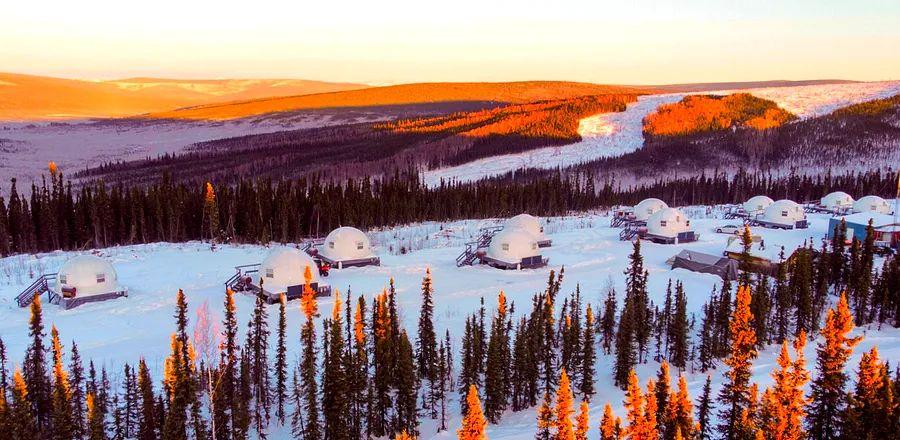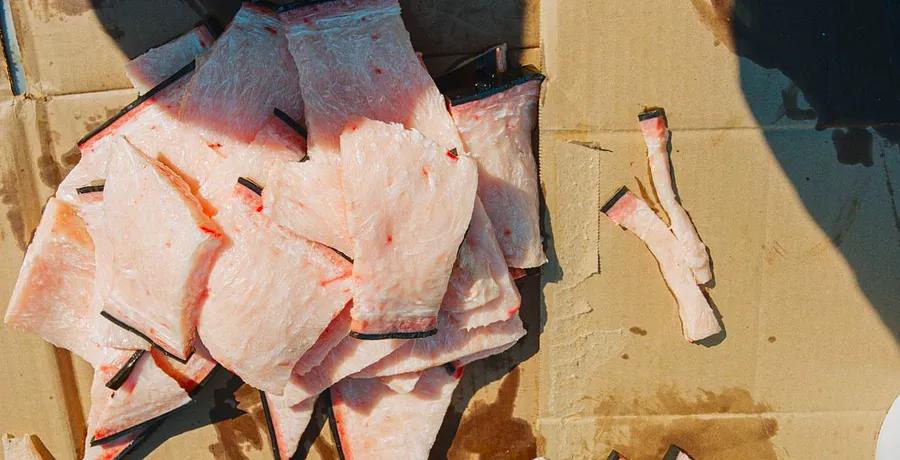This Hotel Ranks Among the Top Spots in Alaska for Aurora Viewing

Insights from Dinogo
Nestled in a boreal forest in Interior Alaska, north of Fairbanks (the state's second-largest city with a population of 30,000) and well away from city lights, Borealis Basecamp offers an off-the-grid experience while still providing the luxuries of a high-end lodge. Since its opening in 2017, this retreat has become a sought-after destination for those chasing the northern lights. The site features 28 geodesic igloos constructed similarly to those used by scientists in Arctic conditions, but enhanced with modern comforts. Each igloo boasts a ceiling made from repurposed 16-foot-wide helicopter windows, allowing guests to gaze at the chartreuse and magenta auroras from the comfort of their beds. In winter 2022, Borealis Basecamp introduced a series of contemporary cube-shaped cabins with floor-to-ceiling windows designed for effortless sky viewing.
Who’s it Suitable For?
This is a perfect getaway for northern lights enthusiasts eager to witness an awe-inspiring solar display. The Alaska tourism bureau reports that the aurora borealis can be seen 240 nights a year in Fairbanks. Since Borealis Basecamp is located about 30 miles from the city’s light pollution, your chances of witnessing the phenomenon here are even greater. In terms of accommodation, the igloos are ideal for couples (often favored by honeymooners), while the cubes come with an additional sleeping loft (akin to a bunk bed’s top level) suitable for small families of three.
While Borealis Basecamp is renowned for its breathtaking displays of the northern lights in winter, the property also welcomes guests throughout the summer, making it an ideal base for outdoor enthusiasts eager to explore Alaska’s tundra without snow and beneath the midnight sun.




The site
Nestled within a secluded 100-acre boreal forest, just a 45-minute drive north of Fairbanks, Borealis Basecamp is located on the southern edge of a vast wilderness area that encompasses both federal and tribal lands, extending over 100 miles to the White Mountains. The camp is enveloped by birch trees, which in winter are cloaked in a layer of hoarfrost, while stunted black spruces bend under the burden of snow and ice. In summer, the landscape transforms as blueberry and salmonberry bushes flourish, and the ground becomes a tapestry of dry, spongy vegetation rich in root matter and diverse mosses.
Although Borealis Basecamp derives its name from the stunning celestial displays that illuminate the winter sky, the property remains open and inviting throughout the summer months.
The Accommodations
Each of the 28 geodesic fiberglass igloos is equipped with a king-size bed, a compact kitchen area featuring a sink and mini-fridge, and a bathroom that includes a shower and a dry flush toilet, utilizing Mylar liner bags instead of water for waste disposal. A spectacular 16-foot-wide window spans much of the ceiling in every unit, offering breathtaking views.
Adriel Butler, the owner, has introduced eight new cube accommodations designed to provide a more thermally efficient experience while still offering stunning in-room vistas of the night sky. Each unit includes a king-size bed, a separate lofted sleeping area, and a cozy kitchen nook. The bathrooms are equipped with flushing toilets, soaking tubs, rainfall showers, and heated towel racks. The northern wall of each accommodation features floor-to-ceiling windows, and during summer, automated blinds help to shield against the midnight sun.
This summer, Borealis Basecamp will introduce a series of "double cube" accommodations designed to comfortably accommodate at least five guests. One half of the space will resemble the current cubes, while the other half will feature a sofa that can transform into a queen bed, along with a two-person indoor sauna, a soaking tub, and a walk-in shower.

Image courtesy of Borealis Basecamp
Culinary Offerings
Latitude 65, the on-site restaurant, is housed in a spacious yurt adorned with large windows that showcase breathtaking views of the snow-capped White Mountains. The restaurant makes a concerted effort to source ingredients locally—an ambitious task given the remoteness of the area. Fresh salmon, halibut, and crab are procured from local fishermen, while free-range organic chicken and beef are sourced from a farm in Fairbanks. During Alaska's brief growing season, root vegetables flourish, so expect a focus on these hearty varieties. Throughout the summer and fall, the culinary team forages around the property for blueberries, cloudberries, mushrooms, chaga, fiddlehead ferns, and other delights, which are featured in salad dressings, cheesecakes, and garnishes alongside dishes like halibut cassoulet and pan-seared sockeye salmon.
The surprisingly extensive beverage menu features a majority of beers sourced from local craft breweries, including 49th State Brewing in Anchorage and HooDoo Brewing in Fairbanks. The wine selection caters to various budgets and includes sought-after choices that will delight wine enthusiasts, such as selections from California's Daou Vineyards. Specialty cocktails pay homage to Alaska, with one inspired by the vibrant hues of the northern lights.
Each evening, the staff sets up a bonfire at a fire pit adjacent to the restaurant and provides all the essentials for making s’mores. Appetizers are offered in the lounge, and throughout the day, guests can enjoy warm beverages like coffee, tea, and hot chocolate in the reception area.
Staff and Service
Friendly and well-informed.
Accessibility Features
The property features minimal steps; the igloos require navigating approximately six steps to reach the door, while the cubes are step-free. However, the dirt pathways, along with snow and ice that often cover walkways during winter, may present challenges for wheelchair users.
Exceptional Experiences
In this region, the solar displays typically don't begin until after midnight, prompting aurora enthusiasts to immerse themselves in nature through various activities. One of the highlights is a morning spent with staff who are Iditarod mushers. This outing includes playful interaction with puppies (who live off-site but travel in with their mushers each day). Participants also engage in a discussion about sled dog racing, including insights into life on the trail and how mushers care for their dogs. Guests then meet the working dogs, armed with treats, and enjoy a half-hour ride through the boreal forest and across the tundra. During summer, guests can still observe the dogs, though rides are not available.
Other adventure options include hiking with reindeer (who stroll alongside visitors, nibbling on lichen), snowshoeing (or trekking during warmer months), and taking a snow machine (or snowmobile, as known in the Lower 48) or ATV tour on a snowcat to reach a nearby ridgeline for sunset s’mores and champagne.

1

2

3

4

5
Evaluation :
5/5